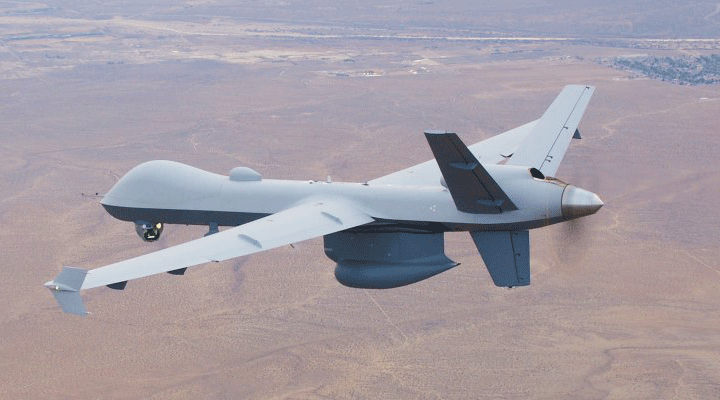Ever wonder what it takes for the CIA or DoD to put a drone in the air and unleash a Hellfire missile on some unsuspecting terrorist driving from point A to B, or group of terrorists having noon tea?
Thanks to the American Civil Liberties Union (ACLU) and a few good FOIAs, now you know.
Saturday, the ACLU announced that the White House finally delivered on the ACLU’s three-year-old FOIA for the Presidential Policy Guidance on U.S. drone strikes in foreign lands, usually against foreign people, who aren’t not wandering around in war zones. Some Americans have been killed, and they were apparently either terrorists or hanging out with terrorists. Politico’s Josh Gerstein writes, “President Barack Obama has to personally approve the killing of a U.S. citizen targeted for a lethal drone strike outside combat areas.”
“’The PPG provides,’” ACLU Deputy Legal Director Jameel Jaffer said, “’crucial information about policies that have resulted in the deaths of thousands of people, including hundreds of non-combatants, and about the bureaucracy that the Obama administration has constructed to oversee and implement those policies.’” According to the White House, the PPG guided attacks that killed some 2,500 terrorists and killed somewhere between 70 and 115 civilians, either by mistake or in collateral damage.
CLU’s Jameel Jaffer puts that whole, complicated process in contemporary political context. It is, he said, “’a timely reminder of the breadth of the powers that will soon be in the hands of another president.’”And New York Times’ Charlie Savage wrote, “For Mr. Obama, the drone program is personal, a defining feature of his presidency. . . . he took a direct role in approving some strikes, including the deliberate killing of an American, and in setting up rules to govern them.” However, Politico’s Josh Gerstein asserts, “A future president would be under no obligation to follow the guidance, but Obama and his aides have made clear they hope that the framework will bring a degree of due process that future administrations will leave in place.” We’ll soon see.
WHAT IT TAKES TO CAPTURE OR KILL
Josh Gerstein pulls apart a good deal of the 18-page, May 22, 2013, “Procedures For Approving Direct Action Against Terrorist Targets Located Outside The United States And Areas Of Active Hostilities.” And my own quick read provides a few of the following points:
- The PPG is about both capturing and killing, not just killing. And capturing a terrorist is far better than killing a terrorist because it “offer the best opportunity for meaningful intelligence gain from counterterrorism (CT) operations and the mitigation and disruption of terrorist threats.”
- If the plan is to capture, the planning agency had better have a good plan on where keep the target, and GITMO isn’t a plan: “In no event will additional detainees be brought to the detention facilities at the Guantanamo Bay Naval Base.”
- Subjects of the PPG are those we can’t capture or kill under the laws of armed conflict (because they are outside combat zones like Afghanistan).
- Near certainty is the standard for pulling the trigger against a high-value target, and near certainty that there will be no civilians killed in collateral damage is expected.
- If an American citizen is nominated, then the Department of Justice has to weigh in to make sure “that such action may be conducted against the individual consistent with the laws and Constitution of the United States.”
- The process is a fairly bureaucratic one that requires operational plans be reviewed by the general counsel from the agency proposing the action, first, and then subsequent reviews all the way up to the National Security Council and, then, recommendation to the President.
- Operational plans must adhere to 8-10 “precision” criteria.
- Target profiles must include . . . well, we don’t know; those six points are redacted.
Altogether, the PPG is on its face fairly straight forward. Of course, one can imagine dozens or even hundreds of pages of documentation, legal decisions, and the like for each PPG requirement, and then review after review before the recommendation gets to POTUS. With that, one could argue that the lengthy procedure would undermine possibilities of capturing or killing a target efficiently; however, I suspect there are many operational plans on the shelf, already approved, waiting to be dusted off when one of the agencies finds and positively identifies the target.




